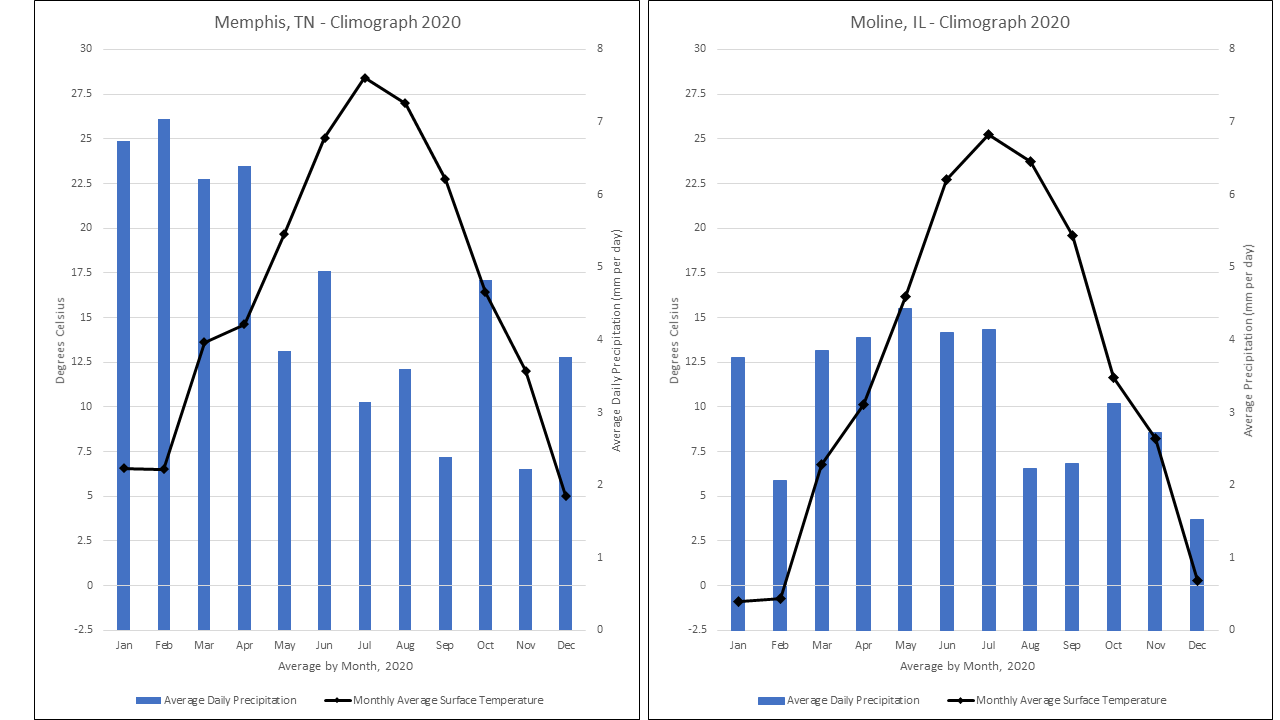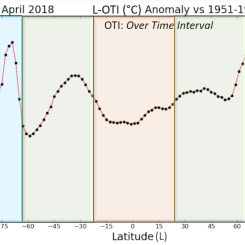Mini Lesson/Activity
Mosquito Habitats
Overview
Students compare climographs for two locations to determine the most likely months to expect the emergence of mosquitoes in each location.
Student Directions
There are many species of mosquitoes and some can spread disease. Culex pipiens is a common species in the United States that is a disease spreader. It is commonly called the northern house mosquito. In the United States, it is known to spread West Nile Virus. (Turell et al. 2002, Kilpatrick et al. 2005, Anderson and Main 2006, Kramer et al. 2008)
There are many factors that combine to provide a favorable habitat for this species. Two of these factors are temperature and precipitation. These mosquitoes need temperatures that are warm enough to promote breeding and survival. Culex pipiens needs temperatures at or above 12.5 degrees Celsius to emerge, or start to show up, for the season. They also require enough precipitation to provide water for the mosquitoes' eggs.
Scientists use temperature and precipitation data to help predict mosquito populations. A climograph shows the average monthly precipitation and temperatures for a location. The graphs below are climographs for Memphis, TN and Moline, IL in 2020. The lines show monthly average surface air temperature in degrees Celsius. The scale for temperatures is on the left side. The columns show the average monthly precipitation in millimeters per day. The scale for precipitation is on the right side.
The two locations are at almost the same longitude, approximately 90 degrees west. Memphis is at 35 degrees North. Moline is at 40 Degrees North.
Steps
- Examine the graphs and answer the questions below. Check with your instructor on how to submit your answers.

link: https://mynasadata.larc.nasa.gov/sites/default/files/2021-12/Graphs.jpg
- Which month do you think the Culex pipiens emerged in Memphis, TN in 2020?
- Which month do you think the Culex pipiens emerged in Moline, IL in 2020?
- What might explain the differences between the predicted emergent months at the two locations?
- What do you think will happen if the temperatures increase by two degrees in each location?
- How could this temperature increase impact human health at these locations?
Teacher Note
Teachers, these mini lessons/student activities are perfect "warm up" tasks that can be used as a hook, bell ringer, exit slip, etc. They take less than a class period to complete. Learn more on the "My NASA Data What are Mini Lessons?" page.
Teachers who are interested in receiving the answer key, please complete the Teacher Key Request and Verification Form. We verify that requestors are teachers prior to sending access to the answer keys as we’ve had many students try to pass as teachers to gain access.
Disciplinary Core Ideas:
- LS1B: Growth and Development of Organisms
- LS2A: Interdependent Relationships in Ecosystems
Crosscutting Concepts:
- Cause and Effect
- Stability and Change
Science and Engineering Practices:
- Analyzing and Interpreting Data
- Constructing Explanations and Designing Solutions
- Engaging in Argument from Evidence




